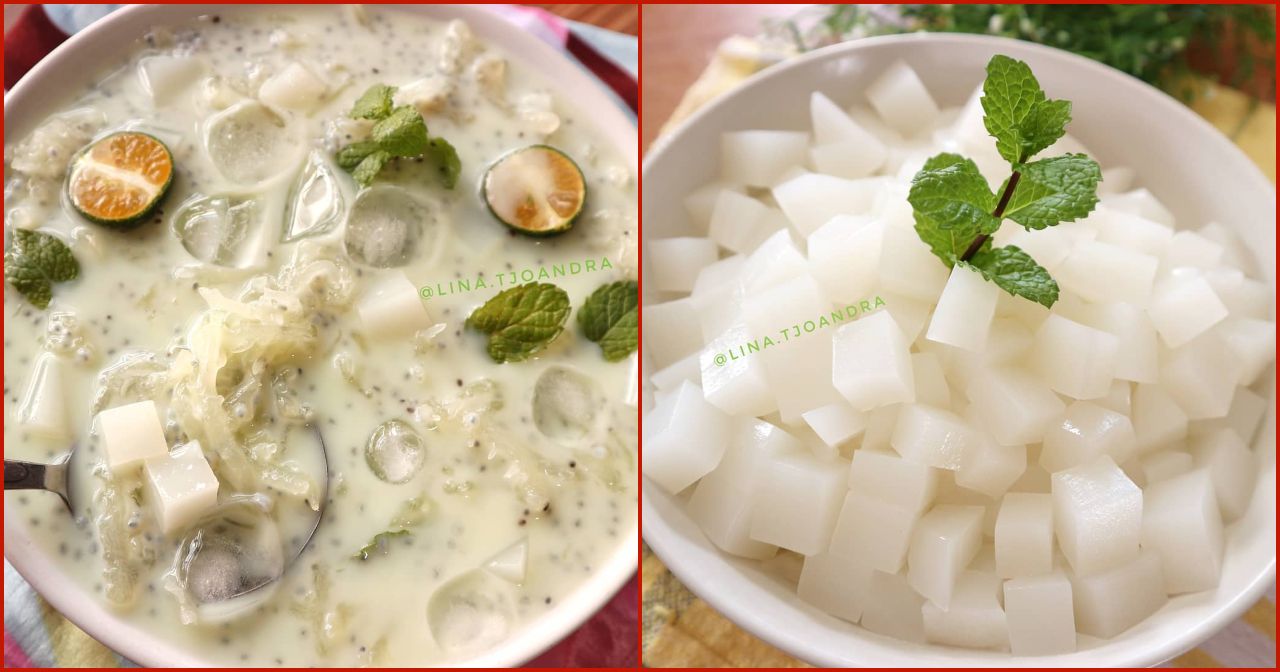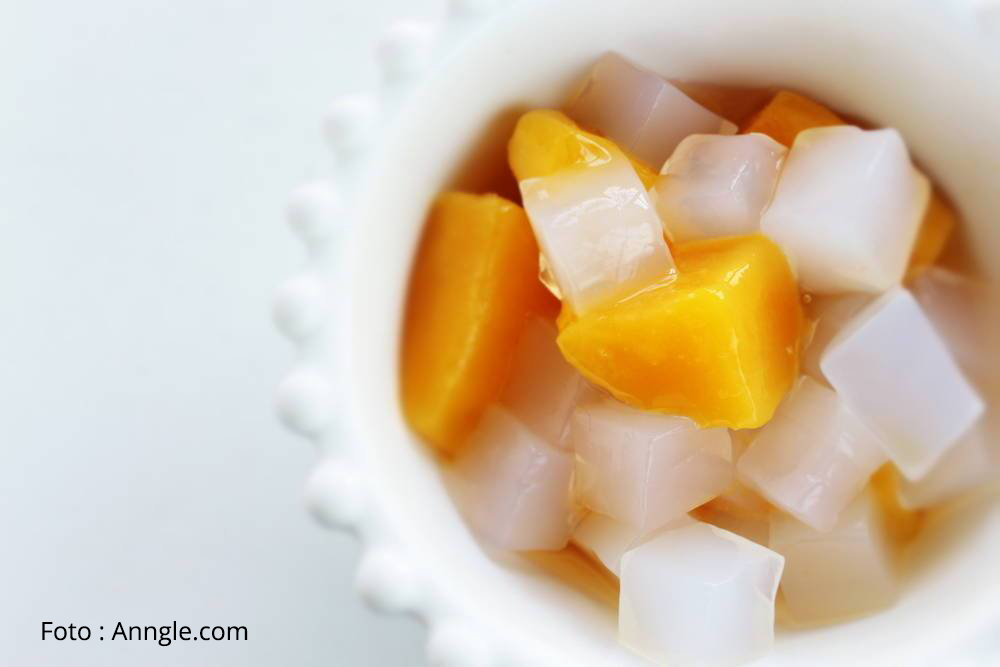
News
2023 Guide to Nata De Coco Calories, Carbs

Nata de coco is a popular dessert ingredient made from fermented coconut water. It has a jelly-like texture and a sweet taste, making it a favorite among many people. However, as with any food, it’s essential to know its nutritional content, especially if you’re watching your calorie and carb intake. In this article, we’ll delve into the nata de coco calories, carbs, and nutrition facts, along with some other important information you need to know.
What is Nata De Coco?

Nata de coco is a Philippine delicacy that has spread to other Southeast Asian countries and beyond. It is made from coconut water that has been fermented with the help of Acetobacter xylinum bacteria. The result is a translucent, jelly-like substance that is cut into small cubes before being used in various desserts.
Nata de coco is low in calories and has a sweet taste, making it a popular ingredient in many dishes. However, it’s essential to note that it contains high amounts of sugar, so it should be consumed in moderation.
Summary:
- Nata de coco is a Philippine delicacy made from fermented coconut water.
- It has a jelly-like texture and is often used as an ingredient in desserts.
- It’s low in calories but high in sugar, so it should be consumed in moderation.
Nata De Coco Calories
One of the most critical pieces of information that people want to know about nata de coco is its calorie content. Calories are a measure of the amount of energy that food provides when it is metabolized by the body. Knowing the calorie content of nata de coco can help you plan your meals and ensure that you’re not consuming too many calories.
A 100-gram serving of nata de coco contains approximately 56 calories. This is a relatively low amount of calories compared to other desserts, making it a great option for those who are watching their calorie intake.
Summary:
- A 100-gram serving of nata de coco contains approximately 56 calories.
- This is a relatively low amount of calories compared to other desserts.
Nata De Coco Carbs
Carbohydrates are one of the three macronutrients that our bodies need to function correctly. They provide energy to our muscles and organs and are an essential part of a healthy diet. However, consuming too many carbs can lead to weight gain and other health issues.
A 100-gram serving of nata de coco contains approximately 14 grams of carbs. This is relatively low compared to other desserts, making it a great option for those who are watching their carb intake.
Summary:
- A 100-gram serving of nata de coco contains approximately 14 grams of carbs.
- This is relatively low compared to other desserts.
Nata De Coco Nutrition Facts
In addition to calories and carbs, nata de coco also contains other essential nutrients that our bodies need to function correctly. Here are some of the most important nata de coco nutrition facts:
- Fat: Nata de coco is virtually fat-free, making it a great option for those who are watching their fat intake.
- Protein: Nata de coco is low in protein, with only approximately 0.3 grams per 100-gram serving.
- Fiber: Nata de coco is an excellent source of fiber, with approximately 2.8 grams per 100-gram serving.
- Vitamins and minerals: Nata de coco contains small amounts of various vitamins and minerals, including calcium, iron, and vitamin C.
Summary:
- Nata de coco is virtually fat-free.
- It is low in protein, with only approximately 0.3 grams per 100-gram serving.
- Nata de coco is an excellent source of fiber, with approximately 2.8 grams per 100-gram serving.
- It contains small amounts of various vitamins and minerals, including calcium, iron, and vitamin C.
Pros and Cons of Nata De Coco
Like any food, there are both pros and cons to consuming nata de coco. Here are some of the most significant pros and cons to consider:
Pros:
- Low in calories: Nata de coco is relatively low in calories, making it a great option for those who are watching their calorie intake.
- Low in carbs: Nata de coco is also low in carbs, making it a great option for those who are watching their carb intake.
- High in fiber: Nata de coco is an excellent source of fiber, which can help improve digestion and keep you feeling full for longer.
- Versatile: Nata de coco can be used in a variety of desserts, making it a versatile ingredient.
Cons:
- High in sugar: Nata de coco is high in sugar, so it should be consumed in moderation.
- Low in protein: Nata de coco is not a good source of protein, so it should not be relied on as a protein source.
Summary:
- Pros of nata de coco include being low in calories and carbs, high in fiber, and versatile for use in various desserts.
- Cons of nata de coco include being high in sugar and low in protein.
Alternatives to Nata De Coco
If you’re looking for alternatives to nata de coco, there are several options you can consider. Here are some of the most popular alternatives:
- Chia seeds: Chia seeds are a great alternative to nata de coco as they are high in fiber and low in carbs.
- Gelatin: Gelatin is a popular dessert ingredient that can be used in place of nata de coco. It’s low in calories and carbs and can be used in a variety of desserts.
- Fresh fruit: Fresh fruit is a healthy and delicious alternative to nata de coco. It’s low in calories and carbs and provides essential vitamins and minerals.
Summary:
- Alternatives to nata de coco include chia seeds, gelatin, and fresh fruit.
- These options are low in calories and carbs and provide essential nutrients.
How to Make Nata De Coco

If you’re interested in making your own nata de coco, here’s a step-by-step guide to follow:
- Start by sterilizing your equipment. This is important to prevent the growth of unwanted bacteria.
- Mix coconut water with sugar and Acetobacter xylinum bacteria.
- Pour the mixture into a container and cover it with a cloth.
- Leave the container in a warm place for three to five days, stirring occasionally.
- Once the mixture has turned into a jelly-like substance, cut it into small cubes and store them in a container with syrup.
Summary:
- To make nata de coco, you need coconut water, sugar, and Acetobacter xylinum bacteria.
- The mixture is left to ferment for three to five days before being cut into small cubes.
Comparing Nata De Coco and Jubes Nata De Coco Calories
Jubes nata de coco is a type of candy that contains nata de coco as one of its ingredients. Here’s a comparison of the calorie content between nata de coco and jubes nata de coco:
- A 100-gram serving of nata de coco contains approximately 56 calories.
- A 100-gram serving of jubes nata de coco contains approximately 260 calories.
As you can see, jubes nata de coco contains significantly more calories than nata de coco. This is because jubes nata de coco contains additional ingredients such as sugar and other flavorings.
Summary:
- Jubes nata de coco contains significantly more calories than plain nata de coco.
- This is because jubes nata de coco contains additional ingredients such as sugar and flavorings.
Tips for Incorporating Nata De Coco Into Your Diet
If you’re interested in incorporating nata de coco into your diet, here are some tips to keep in mind:
- Use it as a topping: Nata de coco can be used as a topping on various desserts, such as ice cream and fruit salad.
- Mix it with yogurt: Nata de coco can be mixed with yogurt for a healthy and delicious snack.
- Use it in smoothies: Nata de coco can be added to smoothies for a sweet and refreshing drink.
Summary:
- Nata de coco can be used as a topping, mixed with yogurt, or added to smoothies for a healthy and delicious snack.
The Best Nata De Coco Products
If you’re looking for the best nata de coco products, here are some top picks:
- Coco Royal Nata De Coco: This brand offers high-quality nata de coco in various flavors, including original, lychee, and mango.
- Del Monte Nata De Coco: Del Monte is a well-known brand that offers nata de coco in various sizes and flavors.
- Gulong Nata De Coco: This brand offers nata de coco in various flavors, including grape, apple, and peach.
Summary:
- The best nata de coco products include Coco Royal Nata De Coco, Del Monte Nata De Coco, and Gulong Nata De Coco.
FAQs
- Is nata de coco healthy?
- Nata de coco is low in calories and carbs and high in fiber, making it a healthy option when consumed in moderation.
- Is nata de coco high in sugar?
- Yes, nata de coco is high in sugar, so it should be consumed in moderation.
- Can nata de coco help with digestion?
- Yes, nata de coco is an excellent source of fiber, which can help improve digestion.
- How can I incorporate nata de coco into my diet?
- You can use nata de coco as a topping, mix it with yogurt, or add it to smoothies.
- What are some alternatives to nata de coco?
- Alternatives to nata de coco include chia seeds, gelatin, and fresh fruit.
Conclusion
Nata de coco is a delicious and popular dessert ingredient that can be enjoyed in moderation as part of a healthy diet. It’s low in calories and carbs and high in fiber, making it a great option for those who are watching their calorie and carb intake. However, it’s important to note that nata de coco is high in sugar, so it should be consumed in moderation.
In this article, we’ve covered the nata de coco calories, carbs, and nutrition facts, along with some important information you need to know. We’ve also provided tips for incorporating nata de coco into your diet and highlighted some of the best nata de coco products.
Remember to consume nata de coco in moderation and to consider alternatives if you’re looking for a lower-sugar option. By keeping these tips in mind, you can enjoy nata de coco as part of a healthy and balanced diet.
